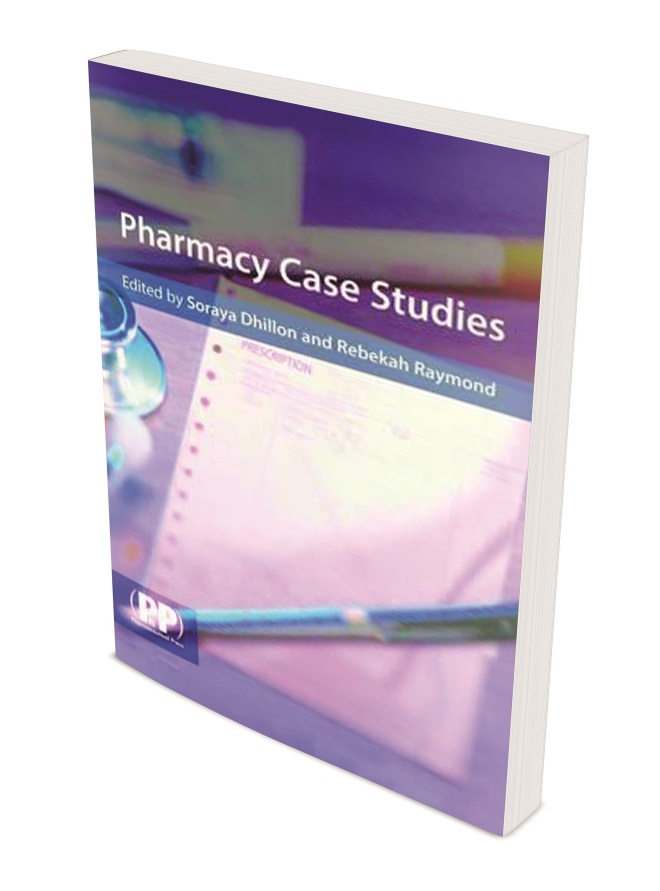
Shutterstock.com
Case scenario
Mrs PJ is a 67-year-old woman with rheumatoid arthritis. Her current prescription includes:
- Salazopyrin EN 500mg twice a day;
- Diclofenac 50mg three times a day;
- Paracetamol 1g up to four times a day when required.
She collected her first prescription for sulfasalazine two weeks ago. She has returned to the pharmacy and asks to speak to you. She has several problems with her medication which she wishes to discuss. First, she complains that her medication is not working properly and she tells you that she has not noticed any benefit from it. She asks you whether you think she should make an appointment with her GP to discuss this.
Case discussion
This discussion, adapted from Pharmacy Case Studies
[1] published by Pharmaceutical Press, highlights the main questions to be considered in managing Mrs PJ’s case.
How is the dose of sulfasalazine normally initiated and titrated?
The patient should start with one tablet daily, increasing their dosage by a tablet a day each week until one tablet four times a day, or two tablets three times a day are reached, according to tolerance and response.
Why is the dose increased gradually?
Nausea may be a problem for some patients, hence the dose is titrated up gradually to avoid this.
What advice would you give Mrs PJ in answer to her question?
Mrs PJ should be informed that the onset of effect of sulfasalazine is slow and an initial benefit may not be seen for 4–16 weeks. It would be useful to check what instructions Mrs PJ has been given regarding the titration of her medication. She is currently on a dose at the lower end of the titration scale.
You could ask Mrs PJ when her follow-up appointment with the prescribing doctor is due. If she has an appointment in the very near future, her dose may be increased at that consultation.
If Mrs PJ has not been given a titrating dose, it may be worth suggesting that she contacts her prescribing doctor to confirm the instructions given to her at the initial appointment. It is important to reiterate that the onset of action of the sulfasalazine is slow.
Mrs PJ also mentions that she has to go to her practice nurse for some blood tests but she’s not sure why. The British National Formulary recommends that liver function tests, full blood counts and renal function tests are carried out regularly.
How often should the above tests be performed?
Close monitoring of the full blood count and liver function tests is necessary initially and then at monthly intervals for at least the first three months of treatment. Renal function tests may be performed periodicÂally, as recommended by the manufacturers.
Why should these tests be performed?
Side effects of sulfasalazine include blood dyscrasias which usually occur in the first 3–6 months of treatment. The full blood count should be checked regularly so that any haematological abnormalities can be Âidentified at an early stage.
There have been reports of hepatitis and renal dysfunction in patients taking sulfasalazine, therefore liver function tests and renal function tests should be performed at regular intervals.
In the course of the conversation, Mrs PJ tells you that since she has started taking her new medication, she has been experiencing stomach discomfort about half an hour after she has taken her tablets.
What do you think could be the cause of this problem?
As the symptoms initially appear to be related to her medication she may be experiencing gastric irritation as a result of her diclofenac or she may be suffering from nausea due to the sulfasalazine. Ask Mrs PJ whether she is suffering from any alarm symptoms like gastrointestinal bleeding, unintentional weight loss, difficulty swallowing, abdominal swelling or persistent vomiting. If Mrs PJ is experiencing any of these symptoms, she should be referred to her GP urgently.
What suggestions could you offer Mrs PJ to help resolve this problem?
With further questioning, it may be possible to clarify the symptoms and to ascertain whether one of the drugs is likely to be causing the problem. You should check that Mrs PJ is taking her diclofenac with food so as to reduce the risk of gastric irritation. If you decide that the problem is likely to be dyspepsia, in most cases an antacid may help. In this case, however, an antacid could not be taken at the same time as either sulfasalazine or diclofenac. This is because both are enteric-coated tablets and the presence of an antacid may lead to the premature dissolution of the coating due to the presence of an alkaline pH. Therefore, the use of an antacid would not be a suitable suggestion.
As this is a suspected adverse drug reaction, it would be prudent to suggest to Mrs PJ that she returns to her GP to discuss this issue with them.
What alternative medication might a doctor prescribe to help Mrs PJ with her upset stomach?
If the doctor decided that the cause of Mrs PJ’s upset stomach may be non-steroidal anti-inflammatory drug (NSAID)-induced dyspepsia, it would be usual to stop NSAID treatment. However in the case of Mrs PJ, this might not be possible due to her concurrent medical history of rheumatoid arthritis.
The doctor may decide to stop the NSAID and see how Mrs PJ Âmanages without the diclofenac or may consider adding in a proton pump inhibitor, in line with Clinical Knowledge Summaries guidance[2]
, to manage the incidÂence of NSAID-induced dyspepsia. If it is felt that the problem is related to the sulfasalazine and the nausea does not abate, the doctor may try an alternative treatment. As Mrs PJ is currently only on a low dose of sulfasalazine it would not really be possible to reduce the dose and still maintain efficacy.
Four months later, Mrs PJ returns to your pharmacy. She says that she still has not had much benefit from her sulfasalazine despite the fact that her dose has been titrated to an appropriate level.
What are the goals of therapy when treating rheumatoid arthritis?
When treating rheumatoid arthritis, the goals of therapy are to reduce the symptoms of the disease, slow progression of the disease and limit the amount of joint deformation, while improving the patient’s quality of life.
Please list the alternative treatments that may be used in the management of rheumatoid arthritis and briefly discuss when an alternative treatment would be tried.
When a drug has been titrated to the maximum dose that can be tolerated and the level of disease control is still unacceptable, therapy may be switched to an alternative agent or another drug may be added in. Other treatments available for managing rheumatoid arthritis include:
- methotrexate
- gold injections
- antimalarials
- leflunomide
- penicillamine
- ciclosporin
- azathioprine
- cyclophosphamide
- cytokine modulators
- corticosteroids
Nicola Parr, BPharm (Hons), MSc, MRPharmS is senior pharmacist, Addenbrooke’s Hospital, Cambridge and Tracy Garnier, BSc (Hons), PhD, PgCert, MRPharmS is principal lecturer in pharmaceutics, School of Pharmacy, University of Hertfordshire.
References
[1] Pharmacy Case Studies by Soraya Dhillon and Rebekah Raymond. Pp 471 £29.99. London: Pharmaceutical Press; 2009. ISBN 978 0 85369 724 4
[2] Clinical Knowledge Summaries (2015) Dyspepsia. Available at: http://cks.nice.org.uk/dyspepsia-unidentified-cause#!scenario:2
General reference
Bryant DM & Alldred A. Rheumatoid arthritis and osteoarthritis (2007). In: Walker R and Whittlesea C (Eds) Clinical Pharmacy and Therapeutics, 4th edn. Edinburgh: Churchill Livingstone.



